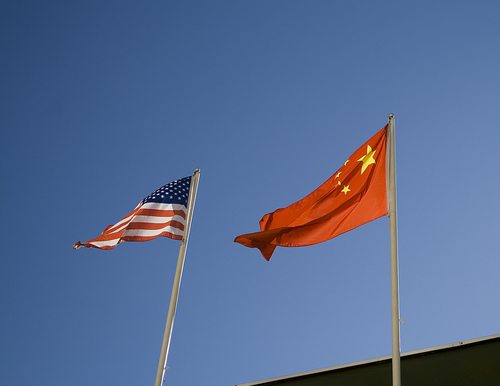Chief of Staff of the Army Gen. Ray Odierno said a military training relationship with China is possible as the U.S. strengthens its presence in the Asia-Pacific theater.
Odierno met with leaders of the Chinese People’s Liberation Army last week to discuss mil-to-mil opportunities and said some guidelines were outlined.
Speaking at the Center for Strategic and International Studies in Washington, D.C., Odierno’s discussion ranged from regional alignment of forces to a return of tiered readiness, driven by a tight budget.
The general had just returned from a trip visiting with military leaders in China before going on to Japan and then Korea.
“We tend to focus on our differences,” Odierno said about the U.S. and China, “but we actually have a lot in common. One is obviously the security and stability of the Pacific region, because of the economic impact it has on both of our countries.”
Odierno said Chinese military leaders first talked with him in November about establishing a training relationship and said they are now going “out of their way” to push ahead on a dialogue between the two armies.
Secretary of Defense Chuck Hagel may travel to China in a month or so, Odierno said, and added that he hopes a training relationship can be solidified then.
“This is by far the biggest step we’ve taken in many, many years in trying to open up this relationship between our armies,” Odierno said.
After visiting China, Odierno went on to Japan where he discussed the future of the Japanese Self Defense Force and then continued to Korea.
The U.S. Army will continue to have a strong relationship with South Korea, he said, but described that relationship as one that is “morphing and changing” as the Republic of Korea takes on more responsibility for its overall defense.
Unit rotations may be the way ahead in Korea, he said, adding that a battalion and aviation unit just rotated to Korea from the United States.
Armies play an important role in the Pacific, Odierno said, even though the area is often thought of as a Navy theater. He said the U.S. Army is expanding its engagements in other countries across the theater.
“Over the last month we did a joint airborne operation in Thailand,” Odierno said. “We are developing relationships with the Philippines. We are having some initial forays into Vietnam. We are increasing our engagements with Indonesia.”
He said making the commander of U.S. Army Pacific a four-star position helped with establishing relationships in the theater. Gen. Vincent K. Brooks took over as U.S. Army Pacific, or USARPAC, commander July 2, and was promoted to four-star general.
“I think we’re going in the right direction,” Odierno said, not only about the Pacific, but about regional alignments elsewhere as well.
For instance, the 2nd Brigade Combat Team, 1st Infantry Division, was aligned with U.S. Africa Command. Small task forces from the brigade supported exercises and other engagements across the continent.
Almost 90 missions were conducted over the last year in Africa, Odierno said, and added such regional alignment of forces will continue to take place in other theaters as well.
“We’re going to align our forces to the combatant commanders, based on their requirements, to help them to shape and set the theaters that they are responsible for,” Odierno said.
Building partner capacity is not the chief of staff’s only concern, though. He said what keeps him up at night is the thought of a contingency call coming in the future that the Army might not be quite ready for and that would cost the nation in terms of lives.
In order to ensure units are ready for the full spectrum of decisive combat operations, Odierno said units will rotate through the Army’s combat training centers, which will be used to their “utmost potential.”
Emphasis will be placed on rotations to the National Training Center at Fort Irwin, Calif., the Joint Readiness Training Center at Fort Polk, La., or the Combat Maneuver Training Center in Germany. Odierno said these types of rotations are needed after 10 years of counter-insurgency and stability operations in Iraq and Afghanistan.
The CTCs will prepare units to deal simultaneously with high-end combat, criminal threats, insurgencies, and other complex scenarios, Odierno said.
“We have to be prepared to do all of those at once,” he said. “Our future leaders will need to operate in this complex environment.”
Of course, investing in the CTCs will reduce the money available for home-station training, he said. Many units will need to conduct virtual constructive training at home station to make up the difference, he said.
With budget cuts this year and possibly next, some hard decisions may need to be made.
“We’re going to have to go to a tiered readiness model that causes us to ensure that we have some level of readiness across some capability,” Odierno said.
Tiered readiness was the system the Army had before 2004 when it adopted the Army Force Generation system, known as ARFORGEN. Under tiered readiness, units that were high priority — or slated to deploy before others — were fully resourced. Those at the lower end of the tier did not always have the equipment and resources needed to immediately deploy.
There are some proposals to eventually shrink the active Army to a force of 420,000.
“We would be challenged to conduct a prolonged joint multi-phased campaign of any duration with that size of force,” Odierno said.
He said a rock bottom force of at least 450,000 active-duty Soldiers, 335,000 National Guard and 195,000 Army Reserve is needed to meet the National Strategic Guidance and “that’s at high risk,” he added.










